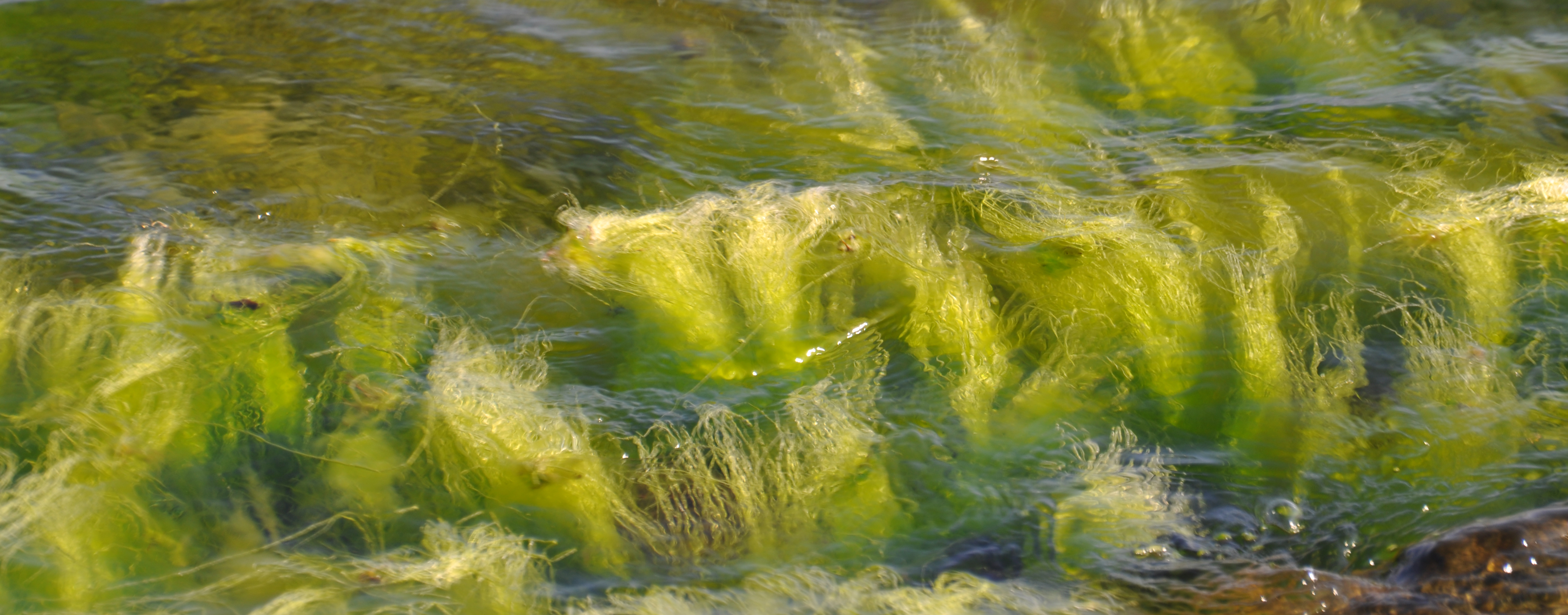A significant amount of exhaust gases is created by both sea and land transport. Because the carbon dioxide which is released into the atmosphere by burning fossil fuels also reaches the top layers of the sea, all of the seas in the world have become warmer and more acidic.
The fewer cars there are on the streets, the less carbon dioxide (CO₂) is generated and the slower the acidification of the seas becomes.
A warmer and more acidic Baltic Sea, however, brings with it changes in the species configuration of the aquatic biota. The first to disappear are multi-year algae, which prefer a stable environment (for example the bladder wrack and the red algae furcellaria), which in turn facilitates eutrophication and through this the proliferation of a green algae called Cladophora glomerata.

Cladophora (Cladophora glomerata). Photo: Estonian Marine Institute, University of Tartu